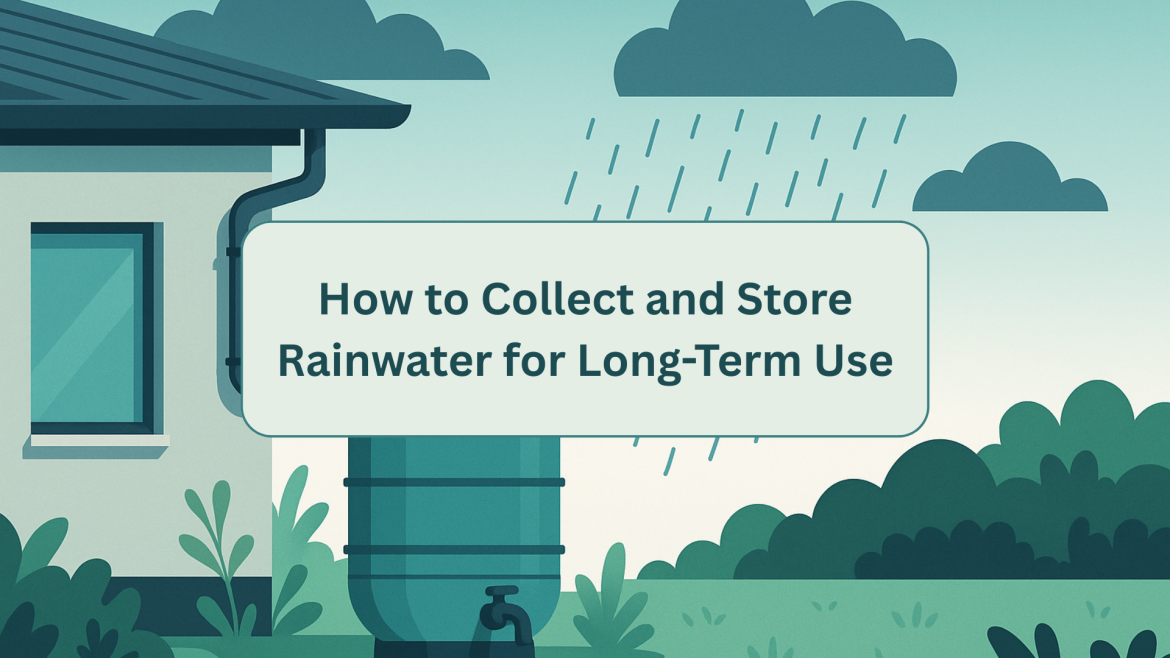How to Collect and Store Rainwater for Long–Term Use
Rainwater is a renewable and accessible water source that can be a lifesaver in survival situations, whether you’re off-grid, preparing for emergencies, or seeking water independence. This detailed guide will walk you through the steps to collect and store rainwater for long–term use, ensuring you have clean, safe water when you need it most.
Why Rainwater Harvesting Matters in Survival
When natural water sources dry up or become contaminated, rainwater steps in as a reliable backup. Here’s why it’s a survival essential:
- Self–Sufficiency: No need to rely on wells or municipal systems.
- Infrastructure Independence: Perfect for when grids fail.
- Universal Availability: If it rains where you are, you can collect it.
- Safety and Sustainability: With proper treatment, it’s clean and eco-friendly.
Mastering rainwater harvesting means you’re ready for anything.
1. Understand the Legal Considerations
Before you set up your system, check the rules in your area. While rainwater harvesting is usually legal, some places have restrictions.
What to Look For:
- Collection Limits or Bans: Some regions restrict how much you can harvest.
- Roof and Gutter Regulations: Certain materials might not be allowed.
- Storage Rules: Tank placement or overflow might be regulated.
Tip: Contact your local water authority or check municipal codes to stay compliant.
2. Best Surfaces for Rainwater Collection
Your collection surface determines water quality—choose wisely.
Top Choices:
- Metal or Tile Roofs: Non-toxic, durable, and easy to maintain.
- Plastic Sheeting: Great for emergencies (think tarps).
Surfaces to Avoid:
- Asphalt or Chemically Treated Wood: These can leach harmful substances into your water.
Gutter Tips:
- Clean Regularly: Remove debris to keep water pure.
- Add Leaf Screens: Block leaves and bugs.
- Use a First–Flush Diverter: Skips the initial dirty runoff.
Survival Hack: No roof? Stretch a clean tarp between trees to catch rain.
3. Rainwater Collection Methods
Here are three practical ways to gather rainwater, from permanent setups to quick fixes:
Rooftop Harvesting System
- How It Works: Gutters channel water from your roof through a downspout into a storage tank.
- Key Feature: A first-flush diverter keeps the dirtiest water out.
- Best For: Long-term, high-volume collection.
Tarp and Funnel Method (Emergency)
- How It Works: Spread a tarp, weigh the corners, and let water pool in the center, then funnel it into a container.
- Best For: Fast, portable collection in the wild.
Rain Chains
- How It Works: These replace downspouts, guiding water stylishly into a tank.
- Best For: Small-scale setups with a decorative twist.
Quick Tip: For rooftop systems, tilt gutters slightly for smooth drainage.
4. Storing Rainwater Safely
Proper storage keeps your water clean and usable for months—or even years.
Best Containers:
- Food–Grade Barrels or IBC Totes: Safe and sturdy.
- Dark Colors: Prevent algae by blocking light.
- Sealed Lids and Spigots: Keep out contaminants.
Storage Essentials:
- Elevate Tanks: Raise them for easy, gravity-fed access.
- Shade Them: Sunlight encourages bacteria—keep them cool and dark.
- Add Mosquito Screens: Cover openings to stop bugs from breeding.
Pro Tip: Label tanks with collection dates and use older water for non-drinking tasks to keep your supply fresh.
5. Filtering and Purifying Collected Rainwater
Rainwater isn’t safe to drink without treatment. Here’s how to make it potable:
Filtration Options:
- Cloth Pre–Filters: Catch leaves and dirt.
- Activated Charcoal or Sand Filters: Remove finer particles.
- Portable Filters (e.g., LifeStraw, Sawyer): Compact and reliable for survival.
Purification Methods:
- Boiling: Heat for 1–3 minutes to kill germs.
- UV Light Purifiers: Use ultraviolet rays to zap pathogens.
- Tablets or Bleach: Add 8 drops of bleach per gallon, wait 30 minutes.
Key Step: Filter first, then purify for maximum safety.
6. Estimating Water Needs and Collection Volume
Plan ahead to ensure you collect enough water.
Daily Needs:
- Minimum: 1 gallon per person per day for drinking and hygiene.
- Extras: Add more for cooking, cleaning, or pets.
Collection Formula:
- Area (sq ft) × Rainfall (inches) × 0.623 = Gallons Collected
- Example: A 1,000 sq ft roof with 1 inch of rain = ~623 gallons.
Tip: Look up your area’s average rainfall to estimate your yield.
Frequently Asked Questions (FAQs)
Can you drink rainwater straight from the sky?
No—it can carry pollutants or bacteria from the air or surfaces. Always filter and purify.
How long can stored rainwater last?
If stored properly (sealed, shaded, cool), it can last indefinitely. Rotate every 6–12 months for freshness.
What’s the easiest setup for beginners?
A rain barrel with a downspout and screen is simple and effective.
Conclusion
Knowing how to collect and store rainwater for long–term use is a survival skill that offers peace of mind and independence. With the right tools—gutters, barrels, filters, and a little know-how—you can turn rainfall into a dependable resource. Start building your system today, and you’ll be ready for whatever comes your way.
💧 Have a rainwater harvesting tip? Drop it in the comments below!

